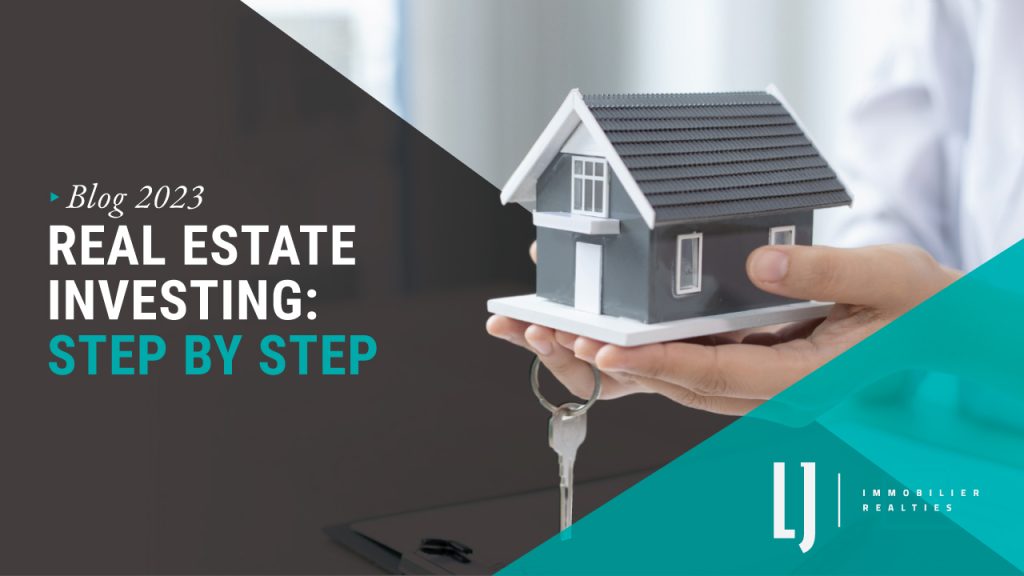
Today, we’re talking you through a step-by-step walkthrough of what we do to help our real estate investor clients, so you can understand what’s actually happening in the background.
We’ve had people say in the past, “My real estate broker is supposed to be working on that, but I don’t know what they’re actually doing.” So, we want to demystify the process for you.
Step one is the initial assessment, which is meant to give us a feel for the client’s goals. Everybody has a different motivation when it comes to investments, and especially when it comes to real estate, there are so many options available.
You may have the goal of parking your money in a property: the property pays for itself, you don’t need a tremendous amount of positive cash flow. As long as we’re making our money with appreciation, we’re happy. That’s going to lead us to look in certain areas of the city.
If we are looking at a more aggressive model, like the BRRRR model, we’ll be looking at properties we can renovate, where we can create value, increase the rents, and refinance. So, understanding the client’s motivations will help point us in the right direction.
Step two comes down to sourcing. Generally speaking, we’re looking at properties that meet the client’s criteria at face value. That includes location, bedrooms, size, etc. But that’s the easy part!
The next step is really the most important one, and that’s the evaluation phase. This is really our bread and butter.
This step entails going in and breaking down the numbers behind the property, because we want this information before we even go for a visit. It’s one way we try to save time for investors: they don’t have to spend three, four hours a day looking for properties. Instead, we’re able to sift through what’s on the market, provide evaluations for them, then send over properties with the accompanying cash flow analysis.
Once we actually go to these properties, what’s there to see? That’s the next level of evaluation: visits. Sometimes, with investment clients, you get so into the numbers that you almost discount the value of the visit, but this step is super important.
In certain cases, you are actually able to meet the tenants, who can provide you with incredible information – especially if the listing broker is not there. You can really push the envelope on questions that you want to ask them in order to garner more information for your client.
The other thing that you need to do is you need to verify what’s been written in the seller’s declaration. You need to make sure these pictures are actually accurate. Photographers are getting very creative with Photoshop and angles, but when we go visit the property, we’re really able to see what’s up.
We’re able to check out the electrical, we’re able to check out a little bit of the structure. We’re not experts in any way, shape or form – these things will come up in an inspection. However, we are able, at face value, to see if it’s worth pursuing or not.
The inspection is the next big step. That’s when we’re going to verify the structure. An expert is
going to come in and make sure that everything is up to code and above-board, because these are properties that we’re going to be renting out to other people. We will therefore have some form of liability regarding what happens to anyone who lives in the building.
So now, we’ve gone through inspection, we’ve done visits, we’ve analyzed everything. We’ve spoken to the bank, we understand what loan-to value they’re going to give us. We’ve also made sure that it still fits the pro forma. At that point, everything’s ready to rock and roll, and we’re ready to confirm that we will be able to execute the rents we’re looking for.
After that, there are annual follow-ups, year after year. Do you have turnover? Do you need new tenants? Are we looking to shift the game plan? What’s happened in the market since last year? Is the building now zoned for short-term rentals, potentially, leading you to shift what you’re doing with this building?
These yearly conversations aim to make sure that you’re really getting the most out of this investment, and that we are always moving forward with the best option for you.
In the end, the idea of purchasing real estate is to purchase more real estate afterwards, right? Most of the time, we’re not just making a purchase and then we’re done. We are continually staying updated on what’s going on with that property, and handling anything that needs to get handled.
The aftermath: managing an investment property
A lot of people, for whatever reason they’ve built up in their head, don’t want to invest in real estate because they think it will be too much work to maintain. People often say, “What happens if the toilet breaks?! I don’t want to be handling it.” This is what happens when a toilet breaks:
you call a plumber and the plumber goes to fix it!
But we do have options as well for people who are looking for a hands-off investment: property management. A real estate agent shouldn’t just be someone you call because you’ve found something and want to make an offer: they should be working for you weeks and months before that.
Want to learn more about how your broker can be a valuable partner? Give us a call or drop us a message – we’ll be happy to share our real estate investing experience with you!





